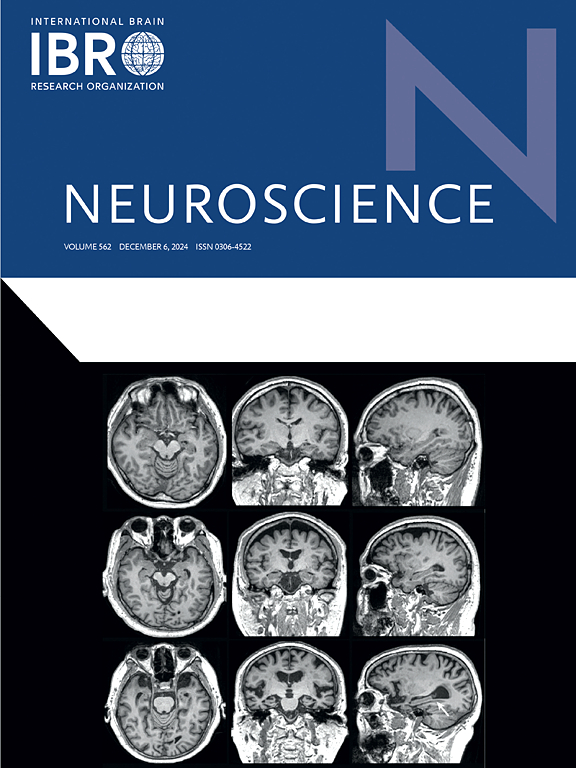Investigating potential molecular mechanisms of antiepileptic drug-induced depression through network toxicology and molecular docking
IF 2.9
3区 医学
Q2 NEUROSCIENCES
引用次数: 0
Abstract
Antiepileptic drugs (AEDs) are essential for epilepsy management but frequently induce adverse effects including depression. This study employs network toxicology and molecular docking to investigate molecular mechanisms underlying AED-induced depression. After identifying eight AEDs (Topiramate, Zonisamide, Phenobarbital, Primidone, Levetiracetam, Gabapentin, Tiagabine, and Perampanel) potentially associated with depression via a literature review, further analysis integrating drug and disease target databases revealed 25 targets relevant to AED-induced depression. Gene ontology analysis conducted with DAVID, indicated that biological processes including synaptic transmission and plasticity, glutamate receptor signaling, and calcium ion regulation are critical to this phenomenon. KEGG pathway analysis demonstrated that AEDs primarily affect neuroactive ligand-receptor interactions, which are essential for synaptic transmission and plasticity, and disrupt calcium, cAMP, MAPK, and oxytocin signaling pathways. These pathways are vital for the proper functioning of the central nervous system, as neurotransmitter interactions activate crucial signaling pathways. The drug-target interaction network analysis identified 12 candidate targets that directly interact with the eight AEDs, and GeneMANIA network expansion provided deeper insights into their functional associations. Molecular docking results revealed the interactions between AEDs and their respective direct targets, with Zonisamide exhibiting significant potential to induce depression through strong binding to multiple targets. In vitro experiments demonstrated that Zonisamide treatment elevated the expression and activity of MAOA protein in the prefrontal cortex of mice, which may influence monoaminergic neurotransmission through MAO pathway regulation, potentially leading to depression. Collectively, this integrated approach elucidates the mechanisms underlying AED-induced depression, thereby establishing a foundation for future therapeutic strategies.

通过网络毒理学和分子对接研究抗癫痫药物致抑郁的潜在分子机制
抗癫痫药物(AEDs)是治疗癫痫必不可少的药物,但往往会引起包括抑郁在内的不良反应。本研究采用网络毒理学和分子对接等方法探讨aed诱导抑郁的分子机制。在通过文献综述确定了8种aed(托吡酯、唑尼沙胺、苯巴比妥、Primidone、左乙曲西坦、加巴喷丁、Tiagabine和Perampanel)可能与抑郁症相关后,进一步整合药物和疾病靶点数据库进行分析,发现了25种与aed诱导的抑郁症相关的靶点。通过DAVID进行的基因本体分析表明,突触传递和可塑性、谷氨酸受体信号传导、钙离子调控等生物过程对这一现象至关重要。KEGG通路分析表明,AEDs主要影响神经活性配体-受体相互作用,这对突触传递和可塑性至关重要,并破坏钙、cAMP、MAPK和催产素信号通路。这些通路对于中枢神经系统的正常运作至关重要,因为神经递质相互作用激活了关键的信号通路。药物-靶点相互作用网络分析确定了12个候选靶点,它们直接与8种aed相互作用,GeneMANIA网络扩展为它们的功能关联提供了更深入的见解。分子对接结果揭示了aed与各自的直接靶点之间的相互作用,Zonisamide通过与多个靶点的强结合显示出显著的诱导抑郁的潜力。体外实验表明,Zonisamide处理可提高小鼠前额叶皮层MAOA蛋白的表达和活性,这可能通过MAO通路调节影响单胺神经传递,可能导致抑郁症。总的来说,这种综合方法阐明了aed诱发抑郁症的机制,从而为未来的治疗策略奠定了基础。
本文章由计算机程序翻译,如有差异,请以英文原文为准。
求助全文
约1分钟内获得全文
求助全文
来源期刊

Neuroscience
医学-神经科学
CiteScore
6.20
自引率
0.00%
发文量
394
审稿时长
52 days
期刊介绍:
Neuroscience publishes papers describing the results of original research on any aspect of the scientific study of the nervous system. Any paper, however short, will be considered for publication provided that it reports significant, new and carefully confirmed findings with full experimental details.
 求助内容:
求助内容: 应助结果提醒方式:
应助结果提醒方式:


